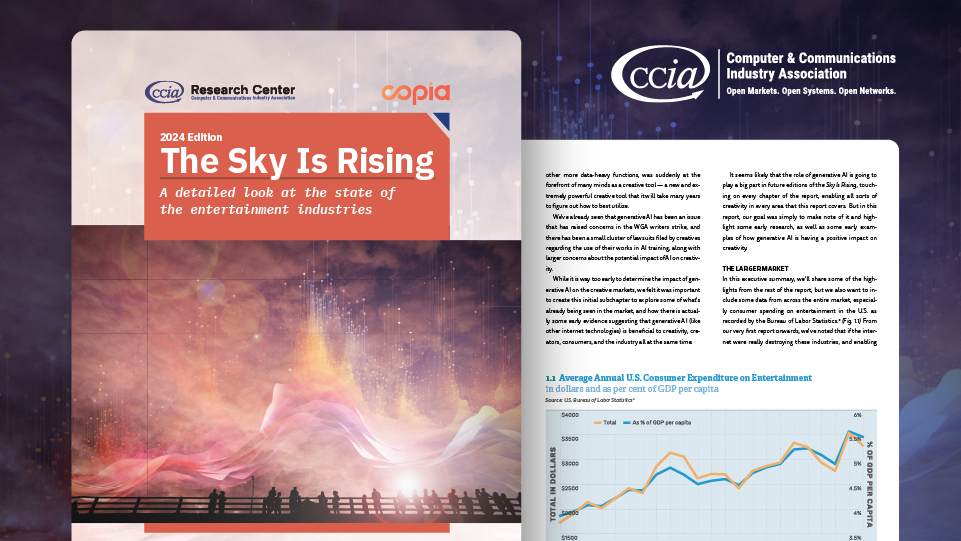On Weaponized Uncertainty, Transparency, and Bringing Music Licensing in From the Cold
We’re taking part in Copyright Week, a series of actions and discussions supporting key principles that should guide copyright policy. Every day this week, various groups are taking on different elements of the law, and addressing what’s at stake, and what we need to do to make sure that copyright promotes creativity and innovation.
Last week at the Future of Music Coalition blog, Casey Rae discussed how transparency is so crucial in the music marketplace. ([1], [2])
As Casey points out, marketplace transparency is a necessary (but not sufficient) condition to ensure artists get a fair and competitive deal.
Digital services have similar needs. Just as artists need accurate and reliable information to know they are receiving a square deal, music delivery services need accurate and reliable information to know what they can play, and what they’ll have to pay, and to whom. Most (but not all) participants benefit from a more transparent marketplace.
To that end, both Spotify and Pandora have sought to facilitate greater information access for artists, with the former providing data at Spotify Artists and Pandora providing detailed analytics via its Artists Music Platform (AMP).
But not everyone benefits from transparency: some licensors can use this lack of transparency to extract higher revenues than what they would receive in a marketplace where all information is visible.
Due to the lack of copyright formalities, regulatory complexity, and dated, pre-digital aspects of the Justice Department’s consent decrees that govern collusive licensing by music publishers, the music market remains very opaque.
Some of this complexity is an inescapable result of the fact that every song is governed by two independent copyrights — one covering the composition (the notes and lyrics) and another covering the actual sound recording (the sound of a performance of the song) which we listen to on a device, on radio, or via our favorite online service.
All complexity is not inescapable, however. As I wrote years ago in a post on patent trolls, all intellectual property laws regulate the right to say ‘no’, and knowing who can say ‘no’ is critical to a well-functioning marketplace. Where that information is not available, for example, in certain areas of patent practice, patent trolls use the uncertainty offensively to extract unjustified settlements. Because penalties for inadvertent infringement can be extraordinarily high, a putative rightsholder can threaten suit and extract settlements that exceed the value of actual rights due to high expected costs. (Arguably, this is what is happening in the case of pre-72 sound recording litigation.).
When too many actors in the marketplace have chosen to “weaponize” uncertainty, the marketplace grinds to a halt. As we’ve seen discussed in the patent context, to get a well-functioning marketplace, one needs transparent disclosures.
Michael Heller’s (whose Gridlock Economy I frequently point to) illustrated this in a 1998 Harvard Law Review article that popularized the concept of an “anti-commons.” When Heller visited Russia in the early 1990s, he found countless merchants operating stands in the streets in freezing weather, right in front of empty, unused storefronts.
When he inquired why merchants were doing business in the freezing streets instead of inside the empty stores, he found the answer in Russia’s haphazard post-Communist privatization: a businessman wishing to occupy a storefront needed to petition (and perhaps bribe) numerous government officials. By contrast, to operate an informal stand in the street, a merchant needed only bribe a local official or two, and a relatively easily identified figure in organized crime. To obtain a store, an indeterminate number of bureaucrats could say ‘no.’ To run an unlicensed stand in the street, only the beat cop and a local thug could stand in the way. The result was that only the merchants with the greatest resources could secure all the permissions necessary to utilize one of those empty storefronts; everyone else was literally left out in the cold.
Complex copyright licensing is in some ways similar. Which permissions are needed, and from whom, in order to operate an online service is often unclear. Like Heller’s storefronts, the rights to play a particular song are often smeared across multiple rightsholders. To make matters worse, each rightsholder may have an interest in obscuring precisely what they own, so as to extract higher royalties, and holding-up the investment a potential user has made in clearing other rights.
The solution to this problem is transparency in who controls what rights. When a potential licensee knows precisely how many people can say no, licensing negotiations occur more easily, and more efficiently. Music listeners and musicians will reach one another more easily, while spending less on transaction costs (read: lawyers), and more services in the marketplace will mean more revenues for artists.
Of course, compelling transparency in a market where some actors benefit from opacity is a challenge. Policymakers have to show leadership if they want to bring opaque markets in from the cold.








